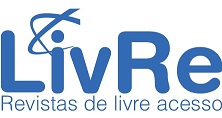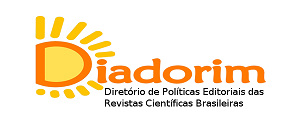Conservation of vegetable coverage in the municipality of Guaiúba/Ceará
analysis through MIFC, SAVI and Diversity Index
DOI:
https://doi.org/10.70860/rtg.v14i33.16967Keywords:
Guaiúba, ConservationAbstract
Studies that involve the conservation status of the vegetation cover have a very wide scope and application, which shows its scientific relevance. These works deal with the processes that involve the different forms of use and occupation. In this sense, the installation of predatory socioeconomic activities has an impact on the environment, and vegetation is one of the components of the landscape that first suffers damage. Thus, the research is developed with the objective of mapping and discussing the conservation status of the vegetation cover in the municipality of Guaiúba. To achieve this objective, the following operational and methodological procedures were applied: SAVI vegetation index to detect photosynthetic activity, The Inventory Method for Phanerophytes and Caméfitas species (IMPC) and diversity indices in order to diagnose and understand the conservation conditions of vegetation cover. Therewith, the results obtained demonstrate the identification of the forms of vegetation cover and land use, discussion of vegetation indices, mapping of the degradation classes and conservation of vegetation cover. In addition, the data generated through the application of the MIFC and the diversity indexes provide a basis for understanding the dynamics of species and their individuals in environments with conserved vegetation cover in Guaiúba.
References
ARTIGAS, Rafael Cámara; DEL OLMO, Fernando Díaz. Muestreo en transecto de formaciones vegetales de fanerófitas y caméfitas (I): fundamentos metodológicos. Estudios Geográficos, Sevilla, vol. 74, p. 67-88. jan./jun. 2013. DOI: https://doi.org/10.3989/estgeogr.201303
BURSZTYN, Maria Augusta; BURSZTYN, Marcel. Fundamentos de política e gestão ambiental: os caminhos do desenvolvimento sustentável. Rio de Janeiro: Garamond, 2012. 588p.
LIMA, Valéria Raquel Porto de. Caracterización biogeográfica del bioma caatinga em el sector semiárido de la cuenca del río Paraíba – Noreste de Brasil: propuesta de ordenación y gestión de um médio semiárido tropical. 2012. 501f. Tese (Doutorado em Geografia) – Departamento de Geografía Física y Análisis Geográfico Regional, Universidad de Sevilla, Sevilla, 2012.
LIMA, Valéria Raquel Porto de; ARTIGAS, Rafael Cámara. Aplicação do método de inventário geobotânico para análise de formações vegetais fanerófitas e caméfitas na Serra de Caturité, semiárido da Paraíba – Nordeste do Brasil. Revista de Geociências do Nordeste, Rio Grande do Norte, v. 2, p. 1001-1011. ago./out. 2016. DOI: https://doi.org/10.21680/2447-3359.2016v2n0ID10563
MAGURRAN, Anne Elizabeth. Diversidad ecológica y su medición. Barcelona: Vedrã, 1889. 200p.
MAIA, Gerda Nickel. Caatinga: árvores e arbustos e suas utilidades. 2. ed. Fortaleza: Printcolor Gráfica e Editora, 2012. 413p.
MENDONÇA, Francisco de Assis. Geografia e meio ambiente. 9. ed. São Paulo: Contexto, 2014. 69p.
MOREIRA, Maurício Alves. Fundamentos do sensoriamento remoto e metodologias de aplicação. 3. ed. Minas Gerais: Editora UFV, 2005 .320p.
MORENO, Claudia E. Métodos para medir la biodiversidade. Zaragoza: GORFI, 2001. 83p.
OLIVEIRA, Maria Jaqueline Martins de. Degradação ambiental, sucessão ecológica e sistemas de uso da terra no semiárido brasileiro: enfoques ao município de Independência, estado do Ceará. 2017. 136f. Dissertação (Mestrado em Geografia) – Programa de Pós-Graduação em Geografia, Universidade Estadual do Ceará, Fortaleza, 2017.
PONZONI, Flávio Jorge. Comportamento espectral da vegetação. In: MENESES, Paulo Roberto; MADEIRA NETTO, José da Silva. (Org.). Sensoriamento remoto: reflectância dos alvos naturais. Brasília: UnB, 2001, p. 157-189.
ROSA, Roberto. Introdução ao sensoriamento remoto. Uberlândia: EDUFU, 2007. 135p. DOI: https://doi.org/10.14393/EDUFU-85-7078-124-6
ZULLO JUNIOR, Jurandir. Correção atmosférica de imagens de satélites e aplicações. 1994. 203f. (Doutorado em Engenharia Elétrica) – Programa de Pós-Graduação em Engenharia Elétrica, Universidade Estadual de Campinas, São Paulo, 1994.
Downloads
Published
How to Cite
Issue
Section
License
Copyright (c) 2025 Tocantinense Journal of Geography

This work is licensed under a Creative Commons Attribution-NonCommercial-NoDerivatives 4.0 International License.
Revista Tocantinense de Geografia does not remunerate any author for the publication of their texts. The contents of the texts published in this journal are the responsibility of the authors.








.png)












